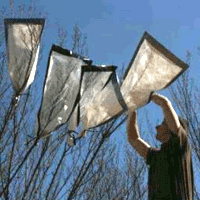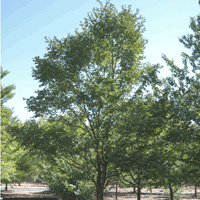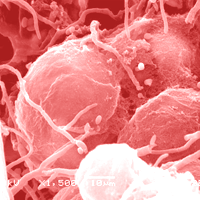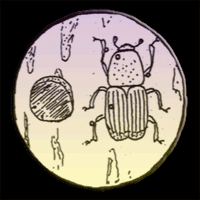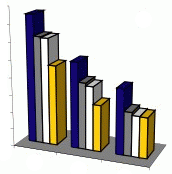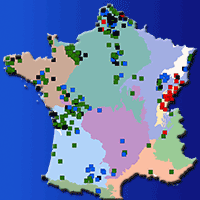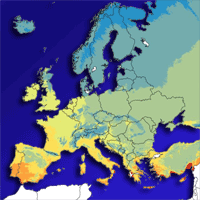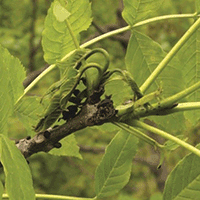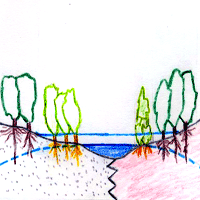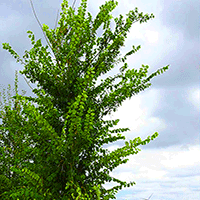
Monitoring of the incidence of Dutch Elm Disease and mortality in experimental plantations of French Ulmus minor clones
Eric Collin (1), Tiffani Pozzi (1), Cécile Joyeau (1) , Stéphane Matz (1), Michel Rondouin (2), Claudine Joly (3)
iForest - Biogeosciences and Forestry, Volume 15, Issue 4, Pages 289-298 (2022)
doi: https://doi.org/10.3832/ifor3820-015
Published: Jul 29, 2022 - Copyright © 2022 SISEF
Research Articles
Abstract
The results of 16 experimental plantations of Ulmus minor clones of the French national collection are presented as a complement to a previous work (Collin et al. 2020) on the outcome of the French Programme for the Conservation of Native Elm Genetic Resources. A total of 710 elms from 38 clones were planted in three different regions of France using two types of experimental designs and exposed to natural infection by Dutch Elm Disease (DED). DED infection and subsequent mortality were monitored in rectangular monospecific plantations (“plot-tests”), comprising at least 100 elms (10 clones). Linear plantations of 15 to 36 elms intermixed with other trees and shrubs (“hedge-tests”) investigated the feasibility of using native field elm clones in hedge reconstruction projects. After at least 9 (up to 17) years of experimentation, overall DED infection frequency was 33%, with scores above 63% in the oldest plantation and in two fast-growing tests. The overall mortality in the 232 diseased trees was 21%, reaching 29% in the oldest plantation and 64% in a hedge-test on high quality soil, suggesting a possible effect of the very fast growth of the trees. A few clones showed an interesting lower infection frequency or some ability to recover, whereas some others were found quickly infected in several tests and could serve in future experiments on clone attractiveness for DED vectors. Practical conclusions for genetic resources conservation consist of recommendations for the establishment of conservation plantations using regional clones.
Keywords
Ulmus minor, Plantation, Dutch Elm Disease, Ophiostoma novo-ulmi, Genetic Resources, France
Authors’ Info
Authors’ address
Tiffani Pozzi 0000-0003-2540-3757
Cécile Joyeau
Stéphane Matz
INRAE, UR EFNO, F-45290 Nogent-sur-Vernisson (France)
Office National des Forêts, Pôle National des Ressources Génétiques Forestières, F-44290 Guémené-Penfao (France)
CREPAN, 8 rue Germaine Tillion, F-14000 Caen (France)
Corresponding author
Paper Info
Citation
Collin E, Pozzi T, Joyeau C, Matz S, Rondouin M, Joly C (2022). Monitoring of the incidence of Dutch Elm Disease and mortality in experimental plantations of French Ulmus minor clones. iForest 15: 289-298. - doi: 10.3832/ifor3820-015
Academic Editor
Alberto Santini
Paper history
Received: Mar 21, 2021
Accepted: Jun 13, 2022
First online: Jul 29, 2022
Publication Date: Aug 31, 2022
Publication Time: 1.53 months
Copyright Information
© SISEF - The Italian Society of Silviculture and Forest Ecology 2022
Open Access
This article is distributed under the terms of the Creative Commons Attribution-Non Commercial 4.0 International (https://creativecommons.org/licenses/by-nc/4.0/), which permits unrestricted use, distribution, and reproduction in any medium, provided you give appropriate credit to the original author(s) and the source, provide a link to the Creative Commons license, and indicate if changes were made.
Web Metrics
Breakdown by View Type
Article Usage
Total Article Views: 28063
(from publication date up to now)
Breakdown by View Type
HTML Page Views: 24369
Abstract Page Views: 1875
PDF Downloads: 1377
Citation/Reference Downloads: 4
XML Downloads: 438
Web Metrics
Days since publication: 1239
Overall contacts: 28063
Avg. contacts per week: 158.55
Citation Metrics
Article Citations
Article citations are based on data periodically collected from the Clarivate Web of Science web site
(last update: Mar 2025)
Total number of cites (since 2022): 2
Average cites per year: 0.50
Publication Metrics
by Dimensions ©
Articles citing this article
List of the papers citing this article based on CrossRef Cited-by.
References
Comportement de différents ormes en haies bocagères et en forêt [Performance of different elms in field hedges and forest]. Forêt-Entreprise 175: 42-46. [in French]
Gscholar
The Dutch elm breeding programme. In: “Dutch Elm Disease Research, Cellular and Molecular Approaches” (Sticklen MB, Sherald JL eds). Springer, New York, USA, pp. 16-25.
Gscholar
Les ormes résistants à la graphiose [DED resistant elm cultivars]. Forêt-Entreprise 175: 37-41. [in French]
Gscholar
La graphiose en Basse-Normandie depuis 20 ans [20 years with DED in Lower-Normandy]. Forêt-Entreprise 175: 26-28. [in French]
Gscholar
Insect vector behaviour and the evolution of Dutch elm disease. In: “The Elms: Breeding, Conservation and Disease Management” (Dunn CP ed). Kluwer, Boston, MS, USA, pp. 47-60.
Gscholar


